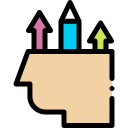In an increasingly digital world, the ability to navigate, evaluate, and create information online is crucial for success. Teaching essential digital literacy skills in English classrooms not only enhances students’ technological proficiency but also deepens their language abilities. By integrating digital literacy into English education, we prepare learners for academic achievement, responsible citizenship, and professional growth in a globally connected society. This page explores key aspects of teaching digital literacy in English, offering insights and practical approaches to equip students with the skills they need for the digital age.
Understanding Digital Literacy in the English Classroom
Defining Digital Literacy
Digital literacy refers to the capacity to use digital technologies thoughtfully and purposefully. In English education, it includes reading, writing, analyzing, and evaluating content found or produced online. As students encounter various digital texts—ranging from blogs and articles to multimedia and interactive tools—they learn to critically assess credibility, recognize bias, and understand context. Equipping learners with these skills ensures they can successfully navigate complex digital environments and make informed decisions about the information they consume and share.
The Importance for Modern Learners
Today’s learners are surrounded by digital media in almost every aspect of their lives. English teachers play a pivotal role in guiding students to become discerning consumers and capable creators of digital content. Digital literacy is essential not only for academic success but also for future professional opportunities and active participation in society. Students who develop these competencies build confidence in finding, evaluating, and producing digital texts, which strengthens their overall communication abilities and prepares them for lifelong learning.
Digital Literacy and Language Development
Integrating digital literacy with language learning brings a wealth of opportunities for students to enhance their skills. When using digital tools and resources, students encounter authentic language, engage in collaborative projects, and communicate across cultures. These experiences stimulate critical thinking, expand vocabulary, and foster creativity. By teaching digital literacy skills in the English classroom, educators create dynamic learning environments where language development goes hand-in-hand with technological proficiency, encouraging students to become independent and adaptive communicators.

Designing Digital-Infused Lessons
Creating lessons that blend digital and language objectives requires intentional planning. Teachers can design activities that ask students to analyze online articles, participate in online discussions, or create multimedia presentations. These tasks harness the power of digital tools to reinforce reading, writing, and speaking competencies. Effective lesson design also involves scaffolding new technology skills and providing opportunities for reflection. In this way, students develop confidence with digital tools while mastering essential English concepts.

Assessing Digital Literacy Skills
Assessment strategies need to reflect the multifaceted nature of digital literacy. Teachers can evaluate students’ abilities to research effectively online, synthesize information from multiple sources, and produce various types of digital content. Rubrics can be adapted to measure digital communication, collaboration, and critical thinking. Regular feedback encourages students to refine their skills, recognize areas for improvement, and take greater ownership of their learning. A well-rounded assessment approach ensures that digital literacy is valued as an integral component of English education.
Fostering Critical Thinking and Online Safety

Evaluating Online Sources
The ability to assess the reliability and accuracy of online information is a fundamental digital literacy skill. In English lessons, teachers can guide students through analyzing articles, blogs, videos, and social media posts using criteria such as author credibility, publication reputation, and evidence quality. Discussion and reflection on the motives behind digital content help students develop healthy skepticism and analytical thinking. Practicing these skills prepares learners to distinguish between fact and opinion, recognize persuasive techniques, and avoid the spread of misinformation.

Navigating Digital Communications
Effective communication online requires both technical know-how and an understanding of digital etiquette. English classes can teach students how to compose clear, respectful messages, participate in constructive discussions, and collaborate on shared projects. Exploring the conventions of email, instant messaging, and social media posts helps students adapt their language for different audiences and purposes. Lessons on tone, context, and privacy foster empathy and prevent misunderstandings, equipping students to represent themselves confidently and responsibly in digital communities.

Teaching Digital Safety and Ethics
Online environments present unique challenges related to privacy, security, and ethical behavior. English educators play a crucial role in addressing topics like protecting personal information, recognizing cyberbullying, and respecting intellectual property. By incorporating case studies, role-plays, and discussions, teachers help students recognize potential risks, understand the consequences of digital actions, and practice making responsible choices. Emphasizing digital citizenship not only keeps learners safe but also promotes a respectful and inclusive online culture.
